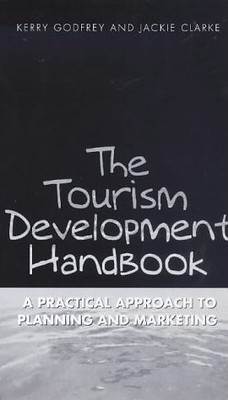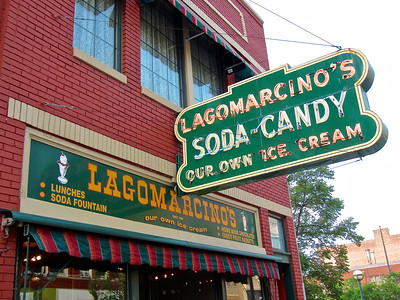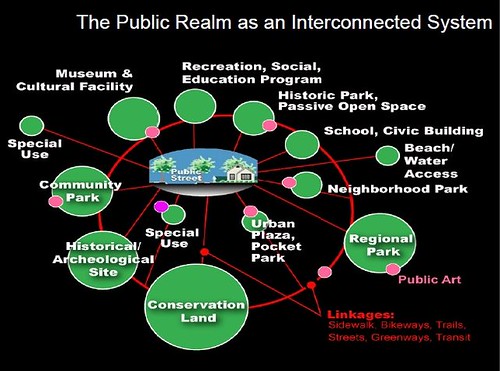The seventh point is a toolkit of neighborhood identification and marketing tools, along with a basic funding allocation to bring it about and maintain the program.
-- "Basic planning building blocks for urban commercial district revitalization programs that most cities haven't packaged: Part 2 | A neighborhood identity and marketing toolkit (kit of parts)"
While writing the second piece, I realized the need for this one, to explain the back story of how to plan overall when it comes to a commercial district.
-- "Basic planning building blocks for urban commercial district revitalization programs that most cities haven't packaged: Part 3 | The overarching approach, layering and daypart planning"
-- "Basic planning building blocks for "community" revitalization programs that most cities haven't packaged: Part 4 | Place evaluation tools"
What I like about Main Street work is the planning and business recruitment and development aspects.
But most Main Street programs end up being about promotion and events to attract potential customers. I like marketing a lot, but I am not into event planning and implementation, even though I can and have done it successfully (farmers markets, festivals, etc.).
Main Street program managers end up being events managers foremost, along with being the primary fundraiser, because after all, they are being paid, while most of the other participants are volunteers.
Most Main Street managers end up not being great at planning, and as I say, "practitioners generally aren't very good at generating meta-theory."
The overall approach I've come to apply to Main Street commercial district revitalization planning, besides the two previous entries in this series, have to do with:
(1) destination development/branding and identify: planning around developing the destination as a whole, focusing on the district's existing identity and creating, shaping, and strengthening this "brand," in part through the application of tourism development principles;
(2) creating a network of civic assets: networking, integrating and expanding the assets you have to work with, including programming (events); and
(3) daypart planning: planning the retail and entertainment mix by "daypart" that is by time of day and day of the week, with the aim of maximizing patronage during all of the dayparts that your program has determined are priorities, and shaping business development, retail and attraction recruitment, and the development of programs and events.
Elements (1) and (3) are explored in the commercial district revitalization framework plan I did for Cambridge, Maryland and Brunswick, Georgia. The second element was addressed, but more "in between the lines" and not so overtly, the way I discuss this now in terms of creating a network of civic assets.
Branding and Identity: We are all destination managers now
One of my earliest blog entries, from 2005, "Town City Branding or 'We are all destination managers now'," makes the point that when we make places great for "us" residents, they are also attractive to visitors, and this is important, because to be successful, most businesses need to draw on more customers than normally live in our district.
 While it's sadly out of print (they do have a copy at the American University library), that blog entry referenced the Tourism Development Handbook: A Practical Approach to Planning and Marketing which except for an out-of-date chapter on online marketing, is a superb overview of "destination development" which basically is what commercial district revitalization planning is.
While it's sadly out of print (they do have a copy at the American University library), that blog entry referenced the Tourism Development Handbook: A Practical Approach to Planning and Marketing which except for an out-of-date chapter on online marketing, is a superb overview of "destination development" which basically is what commercial district revitalization planning is.Of course, there are plenty of other more current resources, including many online.
There are many excellent books on city branding. Place Branding by Bill Baker is a reworking of his previous book Destination Branding for Small Cities.
The point here is to apply the concepts to sub-districts, ideally within the context of a city-wide framework.
The Main Street program produced Marketing an Image for Main Street: How to Develop a Compelling Message and Identity for Downtown, which is excellent but out of print. Shockingly it has been scanned and is online.
 Start by defining your branding and identity. Before you plan and implement various elements of the toolkit, you need to be clear about what you're trying to accomplish in terms of branding.
Start by defining your branding and identity. Before you plan and implement various elements of the toolkit, you need to be clear about what you're trying to accomplish in terms of branding.For years, I always bristled at the term "branding" preferring to use the word "identity" believing it was more authentic, that "branding" meant you're trying to be corporate, and trying to put one over on people.
-- "City branding versus identity | Branding versus Urban Strategy," 2019
-- "Georgetown: A subtle but important difference between branding and identity-positioning," 2010
But the reality is that branding is an agnostic process that can be used by nonprofits too, for:
- understanding consumer needs
- developing and positioning a strong brand foundation
- creating the right imagery for the product
- delivering on the brand promise.
 A logo is an element of a brand and branding, but it's not the brand.
A logo is an element of a brand and branding, but it's not the brand.Too many people think that branding is a logo or a slogan, and that they know how to do it. That's usually a big problem.
But to be fair, there are many constituencies, they don't have a consensus of what branding and identity means and why it's important.
Because it's so complex, this is something where a city needs to be provide external expert assistance.
From the logo standpoint, one of the best examples I can think of is the region-wide RVA program for Richmond, Virginia.
They have built a framework so it is applicable to many sub-elements of the city's offer. And in the end, it's a jumping off point for developing and realizing the city's brand promise, which is comprised of all the great things it has to offer.
A long time ago, I read the book Strategic Marketing for Not-For-Profit Organizations by the U of Michigan Social Work professor Armand Lauffer. One of the concepts that has stuck with me over the years is that organizations have three publics:
1. The input public that provides the organization with resources;
2. The throughput public that does the work of the organization; and
3. The output public to whom the organization's activities are directed.
A big part of the RVA branding program is focused on the "throughput public" or the people already living in Greater Richmond. It's about building community pride as much as it is aiming to attract visitors, recruit new businesses, new residents, etc.
-- RVA Creates
-- "For the RVA brand, 'No' turned to 'Go!'<" Richmond Times-Dispatch
-- "HOW TO DEVELOP YOUR NONPROFIT BRAND: AN INTERVIEW WITH CHRISTOPHER LEE," Urban Views RVA
-- "Q&A: Insights from Veteran Place Branding Guru Bill Baker," Branding in Asia
-- Wish You Were Here: The Branding of Stockholm and Destinations
 Compare the RVA effort to "Prince William Should've Tapped Local Talent for Logo" from the Potomac Local about a new nowhere branding image for Prince William County, Virginia and efforts in Manassas City to better develop and coordinate their identity, image, and branding across all city agencies ("Manassas City manager proposes logo redesign" from the Richmond Times-Dispatch).
Compare the RVA effort to "Prince William Should've Tapped Local Talent for Logo" from the Potomac Local about a new nowhere branding image for Prince William County, Virginia and efforts in Manassas City to better develop and coordinate their identity, image, and branding across all city agencies ("Manassas City manager proposes logo redesign" from the Richmond Times-Dispatch).Of course, the "I Love NY" campaign was an early example of such a program, which was quite successful.
-- "Does 'I Love New York' Help Create a Brand for New York City," Observer
-- "How the ‘I Heart NY’ Logo Transcended Marketing and Endures 4 Decades After Its Debut," Adweek
-- I Love New York brand guide
Not unlike how a goodly part of the RVA program is focused on building community pride, I Love NY was similarly focused at its outset and then later became focused on visitor attraction.

Books such as The Living City and Cities: Back from the Edge by Roberta Gratz, and Changing Places by Richard Moe are particularly good resources on the value of place and historic preservation as a sustainable urban revitalization strategy as is Economics of Uniqueness: Investing in Historic City Cores and Cultural Heritage Assets for Sustainable Development, published by the World Bank and freely downloadable.
(Another good book, a textbook, is Strategic Marketing for Nonprofit Organizations and books on social marketing.)
Civic Assets/Layering
-- "The layering effect: how the building blocks of an integrated public realm set the stage for community building and Silver Spring, Maryland as an example" 2012
-- "Neighborhood libraries as nodes in a neighborhood and city-wide network of cultural assets," 2019
Layering is a good concept to have in your urban revitalization arsenal of tools and tactics, along with an understanding of the value of anchors which are assets that attract people and generate activity, such as a parklet or library or plaza, or a coffee shop or community center of some type (in the DC area, Bloombars in Columbia Heights, Electrik Maid in Takoma DC, or the Corner Store in Capitol Hill do this at various levels of success).
Corner ice cream or gelato shops are killer anchors when it's temperate!

And the best way to think about this is in terms of the David Barth concept of the integrated public realm framework (slide below).

If we think of layering at two scales, first as a site or more micro- concept, then the integrated public realm framework is layering "writ large" at the larger scale of a neighborhood, commercial district, or town center.
The basic idea is to have the right kinds of assets, assets that can be flexibly used, satisfy multiple kinds of uses, that can be "manipulated" in a variety of ways by a variety of types of groups, and that are integrated as a kind of network.
PPS calls this type of integration--assets + programming--the Power of 10.
The layering approach includes a focus on (1) anchor spaces; (2) that are designed to be able to be flexibly used; (3) with anchor events; (4) good management; and (5) integration of the spaces into a network.
Having spaces isn 't enough. They need to be managed, which is a key lesson from successful and unsuccessful pedestrian malls ("More about making 17th Street between P and R a pedestrian space on weekends").
Daypart planning
-- "Night time as a daypart and a design product," 2017
-- "Daypart and age-group planning in mixed use (commercial) districts," 2009
Daypart planning comes from hospitality, restaurants specifically--breakfast, lunch, dinner, happy hour, late night, etc., with special attention paid to weekends, such as for brunch, late night entertainment, etc.
In the proposals for the 11th Street Bridge Park, one of the design teams came up with an expanded framework that takes a broader perspective and I think it's a great model for programming for organizations of all types, from commercial districts to public markets.

It's set up hierarchically:
-- Season
-- Month (July 4th, Christmas, New Year's, etc.)
[-- National Events (Public Lands Day, Earth Day, etc.) -- not included but should be]
-- DC/city events (e.g., Cherry Blossom Festival in April)
-- Geographic interest area (neighborhood street festival, etc.)
and then what it calls
-- Private Events
-- Special Events
-- Extended Events (like a farmers market)
-- Festivals
But it's a concept just for programming. But this kind of calendar planning can also shape the planning of a destination's retail and entertainment mix, setting the priorities for recruitment of retail and entertainment businesses, the development of civic assets, etc.
Daypart planning needs to be organized along demographic lines, according to consumer segment and household type. For example, even if your district is more oriented to adults, it should still make provisions to accommodate families, with parklet playgrounds and splash fountains, even if the rest of the program isn't focused on family households..


No comments:
Post a Comment